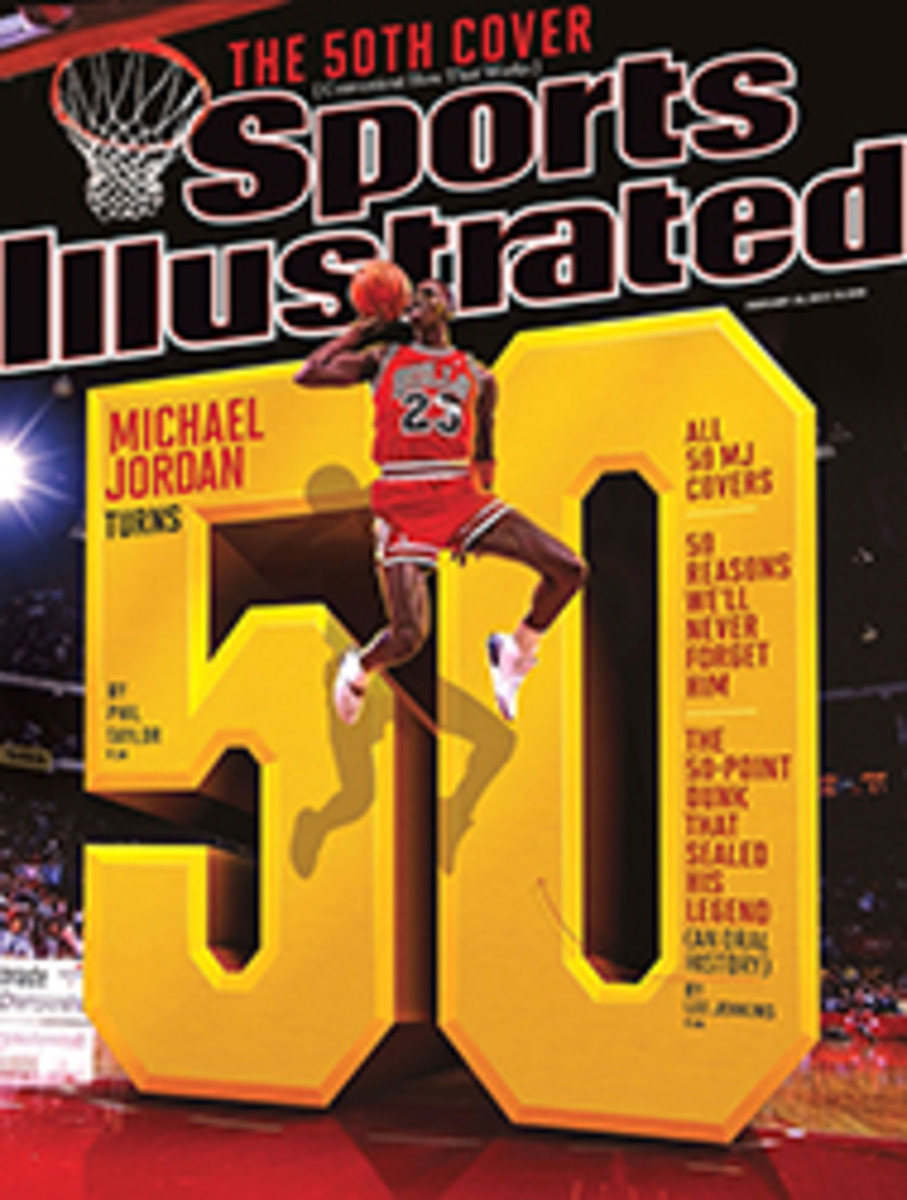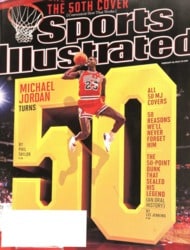
BLOND AMBITION
Tiger and Phil. Phil and Tiger. For nearly two decades they have been the stars of U.S. golf, and neither appears eager to exit stage left. Woods and Mickelson had been the headliners of this young season, winning back-to-back for the 10th time in their blockbuster careers. Mickelson is an arthritic 42-year-old, but in his wire-to-wire victory at the Waste Management Phoenix Open two weeks ago he needed only 256 strokes, equaling the second lowest total in the history of the PGA Tour. He came roaring into the AT&T Pebble Beach National Pro-Am to defend his 2012 victory, during which he dusted Woods—who else?—in the Sunday duel every golf fan craves. Mickelson and Woods, 37, have been so good for so long they define the thinking of the Tour's new generation.
"Tiger and Phil have been the guys to beat since I started watching golf when I was 11," says Russell Henley, 23, who made an audacious rookie debut by winning last month's Sony Open. "Every time you turned on the TV, there they were. I've learned so much just from listening to them talk about the game and observing how they practice and prepare."
With four victories in the last 11 months—to go with the 71 that preceded them—Woods must be considered America's best golfer, almost by default. Mickelson is No. 2 emeritus, but Pebble Beach was a reminder that as dangerous as Phil can be, he has never been a week-in-and-week-out force. Playing Pebble's 18th hole during the third round, he suffered a slapstick triple bogey—two balls in the ocean, one slip onto his backside—and was lucky to make the cut on the number. Phil's stumbles evoked something Henley said: "It seems like everyone is waiting for the next guy to step up."
The wait is over.
After finishing runner-up to Mickelson in the Waste Management and second to Woods the week before that at Torrey Pines, Brandt Snedeker prevailed at Pebble in an impressive unleashing of talent and will. If Sneds, 32, is not yet America's best golfer, he's certainly the hottest: In five starts this year he already has four top three finishes. Going back to last fall, when he won the Tour Championship to clinch the FedEx Cup, Snedeker has been under par in 32 of his last 38 rounds, and he has banked more than $15 million (including the FedEx bonus). Asked what he likes about Snedeker's game right now, Luke List, his playing partner for three rounds at the AT&T, couldn't stop gushing: "I like everything, dude. He's on top of every facet of his game. He's swinging at it great, he's very consistent, his misses are manageable, and he's making everything on the greens. He's very in control of his emotions, very levelheaded. He lets his mistakes go—of course, there aren't that many, so it's easy to do. The big thing is he thinks he's going to make every putt. It's cool to watch someone who, no matter where he is on the greens, he's trying to make it. There are no lag putts with him. That's a different mentality." Then List upped the ante with a notion that would have been laughable a year ago. "He's got all the tools to be Number 1 in the world," he said.
With his floppy hair and goofy manner, Snedeker is as lovable as a golden Lab, but he has learned to morph into something else between the ropes. "I think he fools people with the smiles and waves and all that," says List. "He's a killer." That was obvious on Sunday at Pebble. Tied for the lead with engaging rookie James Hahn, Snedeker stiffed a four-iron on the 2nd hole to set up an eagle that gave him the solo lead. After Hahn bogeyed the 5th hole, Snedeker went for the jugular, reaching the par-5 6th in 2 with a gorgeous three-metal approach to set up a birdie and then rolling in another with a 16-footer on 7. The back-to-back birds pushed his lead to four strokes. "That was where he won the golf tournament," Hahn says.
Actually, Snedeker's finishing kick was just as impressive—he played the tougher back nine in three under par despite being "exhausted." The airtight finish was a monument to a grit and mental toughness that becomes more apparent every week. What was his game plan coming down the stretch? "I needed to really, really focus on doing the small stuff well," Snedeker says.
That's an unusual blueprint for success in this era of the long ball, but Snedeker has learned to embrace his unique skill set. "You've got to accept who you are, accept what kind of golfer you are, play the best you can with what you've got," he says.
Snedeker's ascension into a mild-mannered superstar was born out of despair. He won at Torrey Pines last season to put himself in great position to make his first Ryder Cup team, but inconsistent play the rest of the year left him on the bubble heading into the final qualifying tournament, the PGA Championship. Pressing to catch the eye of captain Davis Love III—his neighbor in Sea Island, Ga.—Snedeker bombed out with a 78--77 missed cut. He was so distraught that upon returning home he called an emergency team meeting with swing coach Todd Anderson, caddie Scott Vail and trainer Randy Myers. "The big message we tried to get across was that he needed to believe in himself more," says Vail.
Anderson had for a long while been trying to get Snedeker to fix his shut club face on the downswing, which had him struggling to move the ball right to left. Suddenly his pupil was receptive to reinvention. Snedeker put in long hours on the range grooving the swing change, and when the FedEx Cup playoffs began he was drawing the ball beautifully. He finished second at the Barclays and sixth at the Deutsche Bank, compelling Love to select him as a captain's pick. "That was a huge confidence booster," Anderson says. "The Tour Championship was even bigger. He had never closed out a tournament from ahead."
Snedeker's jumpy demeanor and Sunday stumbles earlier in his career had given rise to the belief he was too soft to be an effective closer. (It didn't help that after blowing up on Sunday at the 2008 Masters, he cried like a schoolgirl.) But his steely Sunday performance at Pebble Beach should forever put that notion to rest. As impressive as his ball control was—Snedeker missed only one fairway on Sunday, by a foot—what lingers is the cool detachment he displayed, born of self-belief and comfort under pressure. "I was out there for one purpose and one purpose only, and I was extremely focused all day," he said in the champion's press conference.
Now he's looking ahead to Augusta National, where as golf's premiere putter he has a built-in advantage. How ambitious is Snedeker? He's up to fourth in the World Ranking and openly covets No. 1. "People probably [don't] think it's doable, but I think it is, and I believe in myself and what I'm capable of," he says.
There's another title that is of interest to Snedeker. "I would love to be known as the best American golfer," he says. As he made plain at Pebble, he's well on his way.
"The big thing is [Snedeker] thinks he's going to make every putt," says List.
GOLF MAGAZINE
TOP 100 TEACHERS POLL
After Tiger Woods, who is the No. 2 player in American golf?
KEEGAN BRADLEY 3%
PHIL MICKELSON 19%
BRANDT SNEDEKER 78%
GOLF.COM
For a detailed look at the equipment Brandt Snedeker used in his win at the AT&T Pebble Beach National Pro-Am, go to GOLF.com/equipment
PHOTO
Photograph by ROBERT BECK
DAY AT THE BEACH Snedeker shot four rounds in the 60s and closed with a brilliant 65 at Pebble for a 267 total. In his last 17 rounds on the PGA Tour, he has scored in the 60s all but one time.
PHOTO
Photograph by ROBERT BECK
PHIL FALLING Mickelson won in Scottsdale, but he barely made the cut at the AT&T. His inconsistency has left the door open.

